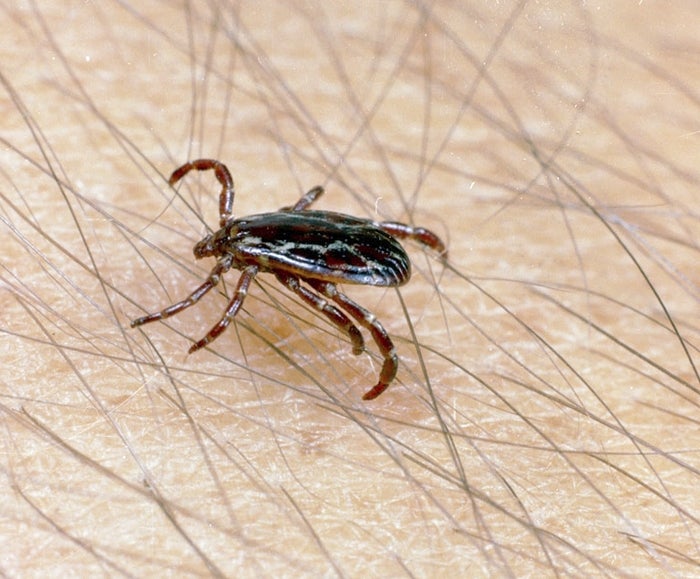Best way to manage ticks? Avoid them
Published 12:00 am Friday, May 13, 2016

- Clemson University A dog tick on a person's arm. Tick season requires protective clothing and sprays.
By Amy-Lynn Albertson
For the Salisbury Post
Question: The ticks seem to be really bad already. What is the best way to get rid of them, and keep my family and pets safe?
Answer: There are no magic fixes to tick problems but there are measures (both chemical and non-chemical) that people can use to reduce tick infestations around their property and to protect themselves and their family.
First, pets that spend all or part of their time outdoors need to be protected for their own safety and so that they don’t serve as a local reservoir for ticks. There are lots of ways to treat you pets, from collars, topical treatments on the neck or back of your pet.
You can treat kennels/pens and other yard areas but please exercise extreme caution about allowing the animals (or your kids) into treated areas before the surfaces dry or before any time interval specified on the pesticide label. Consult the Rowan Extension Center and your veterinarian for information about products suitable for area and specific pet treatments.
Ticks will be more abundant in areas frequented by wild animals. These areas are typically overgrown and weedy or covered with leaf litter and, particularly during those hot summer months, they’re often well-shaded places where the animal rests. Try to keep the ground cover in these areas trimmed back as much as possible. Keep leaf litter and other debris out from under and around picnic tables.
Whenever possible try avoid areas that are tick-inhabited (tall weedy areas). If you are going out in the woods or an overgrown yard, apply repellents to your clothing, particularly shoes, socks and pants. If you’re wearing shorts you can also spray your ankles and calves. Be careful about using (or overusing) repellents on small children.
If you wear long pants while working or hiking outdoors, tuck the pants’ legs into your socks. When your kids come inside from playing outdoors check them over carefully for ticks. Likewise, if you’ve spent time working in your garden or taking a hike, spend some additional valuable time checking yourself thoroughly for any hitchhiking ticks.
Finally if you find a tick on yourself, your children or your pets, remove the tick carefully by grasping it firmly with tweezers or with a tissue (not with your bare fingers). Pull until it dislodges. This is generally considered to be the best method of tick removal as opposed to using lit matches, oil (motor or mineral), detergent or some other chemical to try to dislodge the tick.
Wash the bite area with soap and water and then apply an antiseptic such as alcohol. Record the date of the tick bite on a calendar. Then, watch for any symptoms within the next 10-14 days and contact your doctor if necessary.
You can find additional information about ticks and tick-borne diseases at the following site (which also have additional links): http://www.ces.ncsu.edu/depts/ent/notes/Urban/biting.htm
This information was provided by Dr. Mike Waldvogel, entomology specialist at NC State University.




